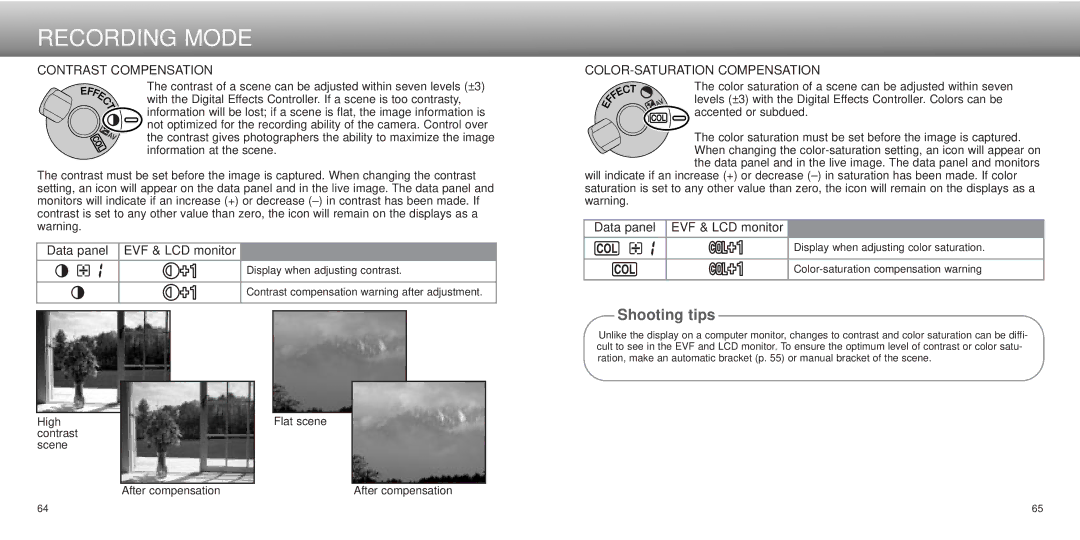
RECORDING MODE
CONTRAST COMPENSATION
The contrast of a scene can be adjusted within seven levels (±3) with the Digital Effects Controller. If a scene is too contrasty, information will be lost; if a scene is flat, the image information is not optimized for the recording ability of the camera. Control over the contrast gives photographers the ability to maximize the image information at the scene.
The contrast must be set before the image is captured. When changing the contrast setting, an icon will appear on the data panel and in the live image. The data panel and monitors will indicate if an increase (+) or decrease
Data panel EVF & LCD monitor 
Display when adjusting contrast.
Contrast compensation warning after adjustment.
|
|
|
|
|
|
|
|
|
|
|
|
|
|
|
|
|
|
High |
|
|
|
| Flat scene |
|
|
|
contrast |
|
|
|
|
|
|
|
|
|
|
|
|
|
|
|
| |
scene |
|
|
|
|
|
|
|
|
|
|
|
|
|
|
|
|
|
|
|
|
|
|
|
|
|
|
|
| After compensation |
|
|
| After compensation | ||
COLOR-SATURATION COMPENSATION
The color saturation of a scene can be adjusted within seven
levels (±3) with the Digital Effects Controller. Colors can be
![]() accented or subdued.
accented or subdued.
The color saturation must be set before the image is captured.
When changing the
will indicate if an increase (+) or decrease
Data panel EVF & LCD monitor ![]()
Display when adjusting color saturation.
Shooting tips
Unlike the display on a computer monitor, changes to contrast and color saturation can be diffi- cult to see in the EVF and LCD monitor. To ensure the optimum level of contrast or color satu- ration, make an automatic bracket (p. 55) or manual bracket of the scene.
64 | 65 |
